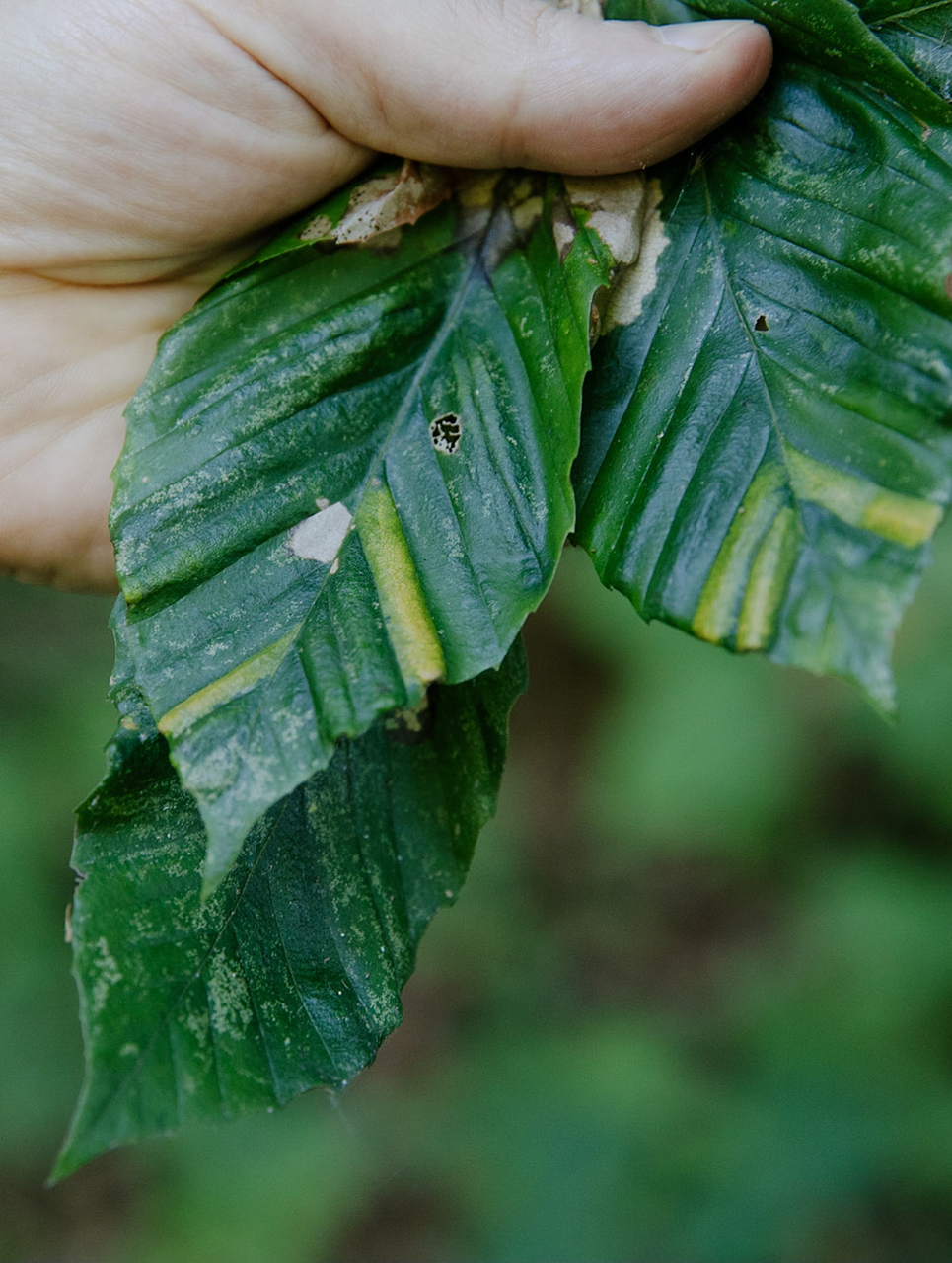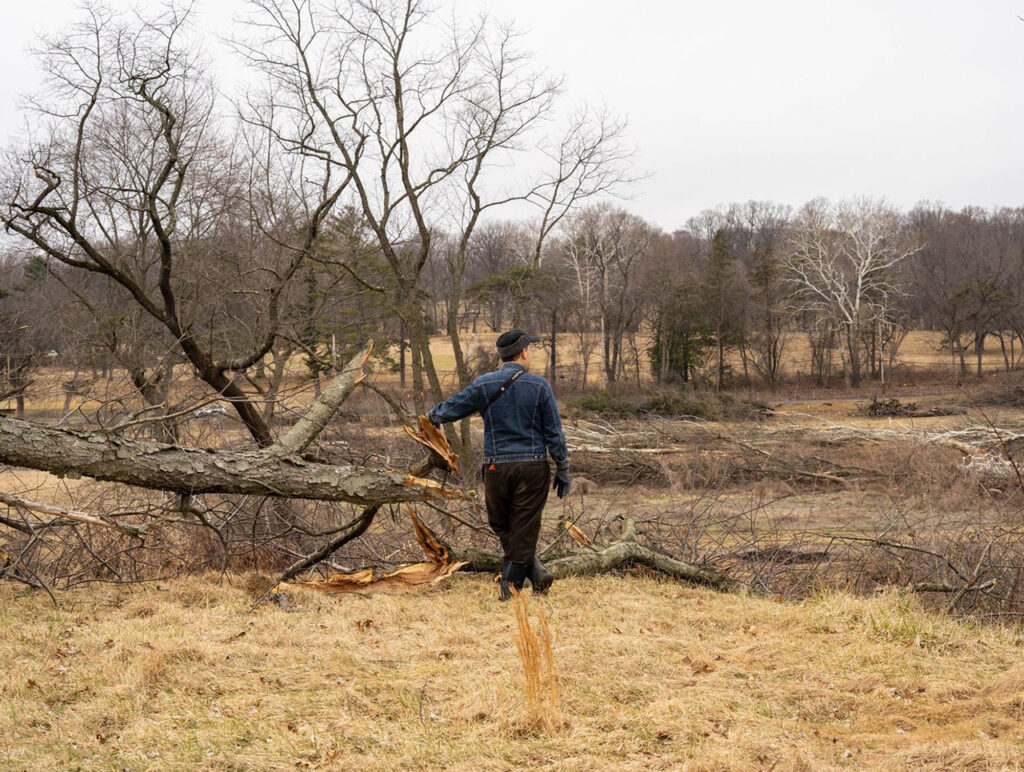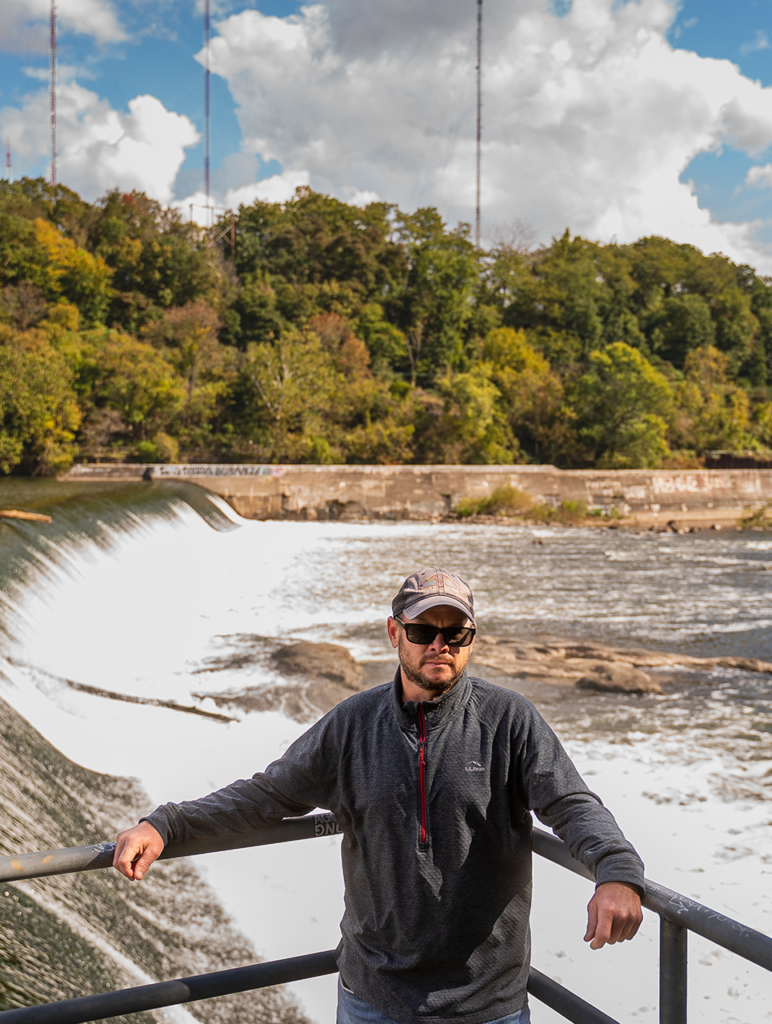I ventured into the Wissahickon along with Grid photographer Rachael Warriner on an unseasonably warm October afternoon to take a look at some beech trees infected by beech leaf disease (BLD).
They were easy to spot. The veins of a beech leaf run out diagonally from a line down the center, dividing the leaf into narrow, parallel sections. The miniscule worms that cause the disease feed on the middle-layer of the leaves, causing the sections between the veins to darken to differing degrees. Sunlight filtering through the leaf from above creates the look of stained glass.
The BLD damage might be easy to spot, but you can’t easily see the worms, a type of nematode named Litylenchus crenatae mccannii. Nonetheless, in six to 10 years, the nematodes can kill a tree. Since it was first discovered in Ohio in 2012, the disease has spread into neighboring states and New England. It’s now found in every county in Pennsylvania, according to Penn State University nematologist Mihail Kantor.
The infectious nematodes appear to be a variety of a species recently identified in Japan, says Kantor. There is a lot we don’t know about them, including how they spread from tree to tree, as well as over longer distances. “That’s the million-dollar question,” Kantor says. “Given the small size, ranging from 750 to 900 microns [or micrometers, about ten times the width of a human hair], it could be anything.” Wind, rain, insects or even birds could transport the worms.
The nematodes that cause BLD seemed to come out of nowhere, but that’s because microscopic creatures tend to escape notice until they cause problems. Scientists have described only about 30,000 nematode species out of a total that is likely closer to one million.

We will miss beech trees if BLD indeed wipes them out. The nut-like seeds of beeches are important for forest creatures like blue jays, squirrels and deer. Their wood is useful as lumber. Beeches spread their branches over countless yards and park benches. And likely for as long as humans have lived around these trees, we have carved into their smooth, gray bark. What starts as a small cut spreads over the years into a broader stroke on the growing canvas of the trunk. The initials of countless teen lovers, united by a heart, endure on beeches long after most of them have surely broken up.

For a tree hugger like me, a walk through the Wissahickon can be like flipping through an old photo album of now-ailing and deceased loved ones. Hemlocks — tall, dark and handsome conifers that form quiet groves along streams — are afflicted by the hemlock woolly adelgid, a tiny insect pest native to East Asia that forms little cottony balls where the tree’s needles meet the stems. The adelgid has wiped out hemlocks in the southern part of the tree’s range. To the north, cold winters have kept the bug at bay, with Philadelphia sitting roughly at the northern edge of where adelgids can survive well enough to kill trees. As global warming dulls our winters, the adelgids are expected to kill more hemlocks.
Survivors could be the nucleus of future resistant forests, whether they spread naturally or are planted by humans.
Ash trees stand dead in the forest, killed by the emerald ash borer beetle, another critter from the other side of the Pacific. Philadelphia Parks & Recreation is treating some larger trees with insecticide to keep them alive and has cut down other dead or moribund ash trees that could have threatened park visitors by dropping branches or falling over.
A fungal blight wiped out chestnut trees in the early 20th Century. The roots of some of those chestnuts still survive and send up shoots, which can reach into the air fifteen feet or so before the blight knocks them back again.
We probably won’t live long enough to see these tree species recover. Scientists have identified and begun to release Asian species of wasps and flies that eat emerald ash borers and hemlock woolly adelgids. Since the 1980s, the American Chestnut Foundation has pursued selective breeding to produce blight-resistant trees. More recently, scientists have worked to genetically engineer resistant chestnut trees and to identify viruses and other diseases of the blight fungus. It will take decades for any of these methods to succeed.
It is too early to say what could mitigate BLD. Trials are underway to determine which chemicals could control the nematodes on individual trees in parks or gardens, but those methods would be impossible to apply on the scale of a forest. Kantor notes that some beeches seem to suffer less damage than others, implying that they have some natural resistance. Survivors could be the nucleus of future resistant forests, whether they spread naturally or are planted by humans. It would take a long time, but, as Kantor says, “There is always hope. You always have to look at the bright side.”








